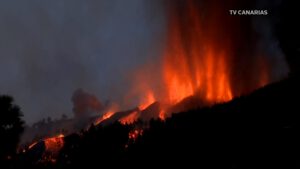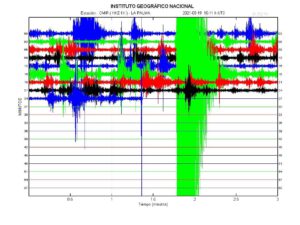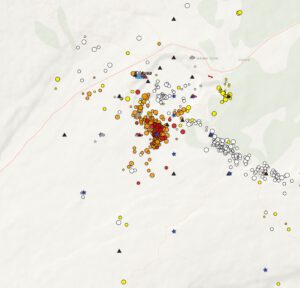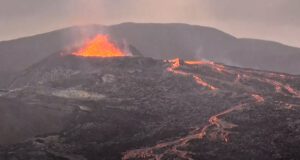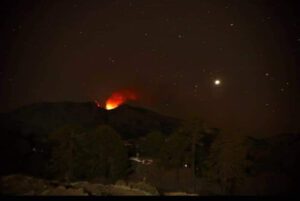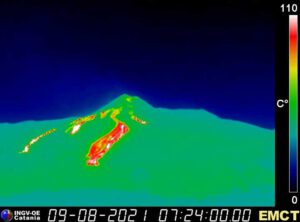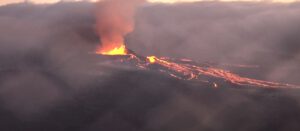State: Japan | Coordinates: 24.28, 141.48 |Eruption: Surtseyan
 If you are in the area of the Japanese Volcano Island archipelago these days, you should not miss a side trip to Fukutoku-Okanoba (Fukutoku-Oka-No-Ba). There you will witness the birth of a new volcanic island. It is a birth that is not without labor pains. It is a birth that is not without labor pains. They express themselves in very strong phreatomagmatic eruptions. During the weekend, such enormous eruption clouds were formed, rising up to a height of 16 km. Currently, the activity has decreased somewhat and the VAAC last detected an eruptive cloud last night.
If you are in the area of the Japanese Volcano Island archipelago these days, you should not miss a side trip to Fukutoku-Okanoba (Fukutoku-Oka-No-Ba). There you will witness the birth of a new volcanic island. It is a birth that is not without labor pains. It is a birth that is not without labor pains. They express themselves in very strong phreatomagmatic eruptions. During the weekend, such enormous eruption clouds were formed, rising up to a height of 16 km. Currently, the activity has decreased somewhat and the VAAC last detected an eruptive cloud last night.
Last year, monitoring flights sighted water discoloration caused either by strong hydrothermal activity, or by a minor volcanic eruption. The last major eruption of the submarine volcano occurred in 2010, and it is known from previous eruptions that even a short-lived island was formed, but quickly eroded again. The last time this happened was in 1986. Such an ephemeral island is also known from 1904. In fact, most volcanic islands start out this way and it is quite possible that it will eventually establish a stable island. In the immediate vicinity of Fukutoku Okanoba is a steeply rising islet. It is reasonable to assume that it is another peak of the same volcano.
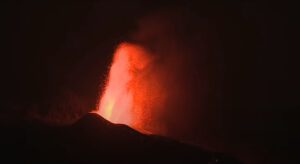 The eruption on La Palma continues and is stable. LiveCam videos show that the remaining lava fountain has been producing lava all night. Lava flows continued to advance, but moved more slowly than anticipated and the postulated Ocean Entry is still a long time coming. Last night, there was a magnitude 3.8 earthquake event, followed by other earth tremors that were somewhat weaker. Further evacuations were initiated due to the new vent that opened yesterday afternoon. There are no signs that the volcanic eruption will end soon.
The eruption on La Palma continues and is stable. LiveCam videos show that the remaining lava fountain has been producing lava all night. Lava flows continued to advance, but moved more slowly than anticipated and the postulated Ocean Entry is still a long time coming. Last night, there was a magnitude 3.8 earthquake event, followed by other earth tremors that were somewhat weaker. Further evacuations were initiated due to the new vent that opened yesterday afternoon. There are no signs that the volcanic eruption will end soon.